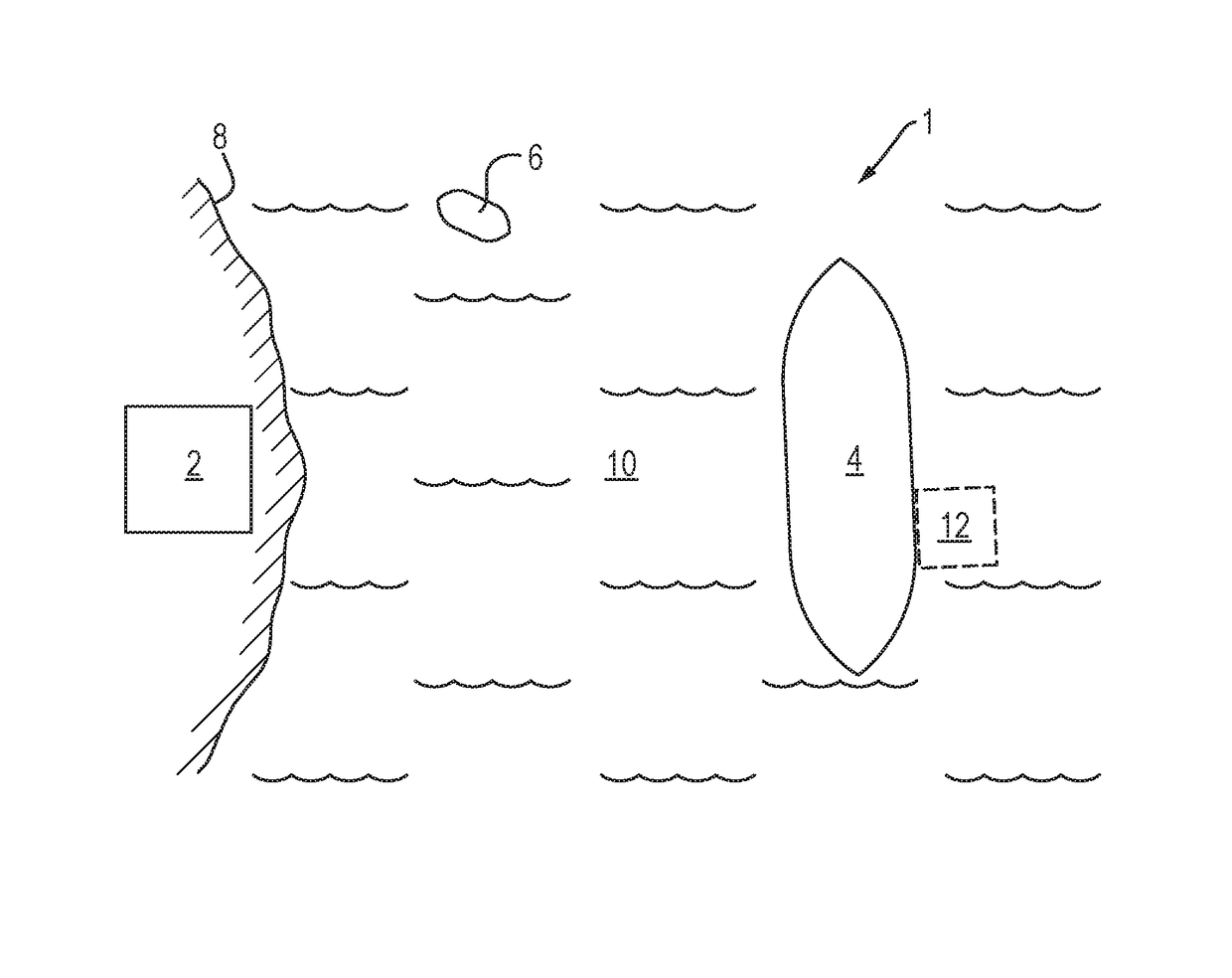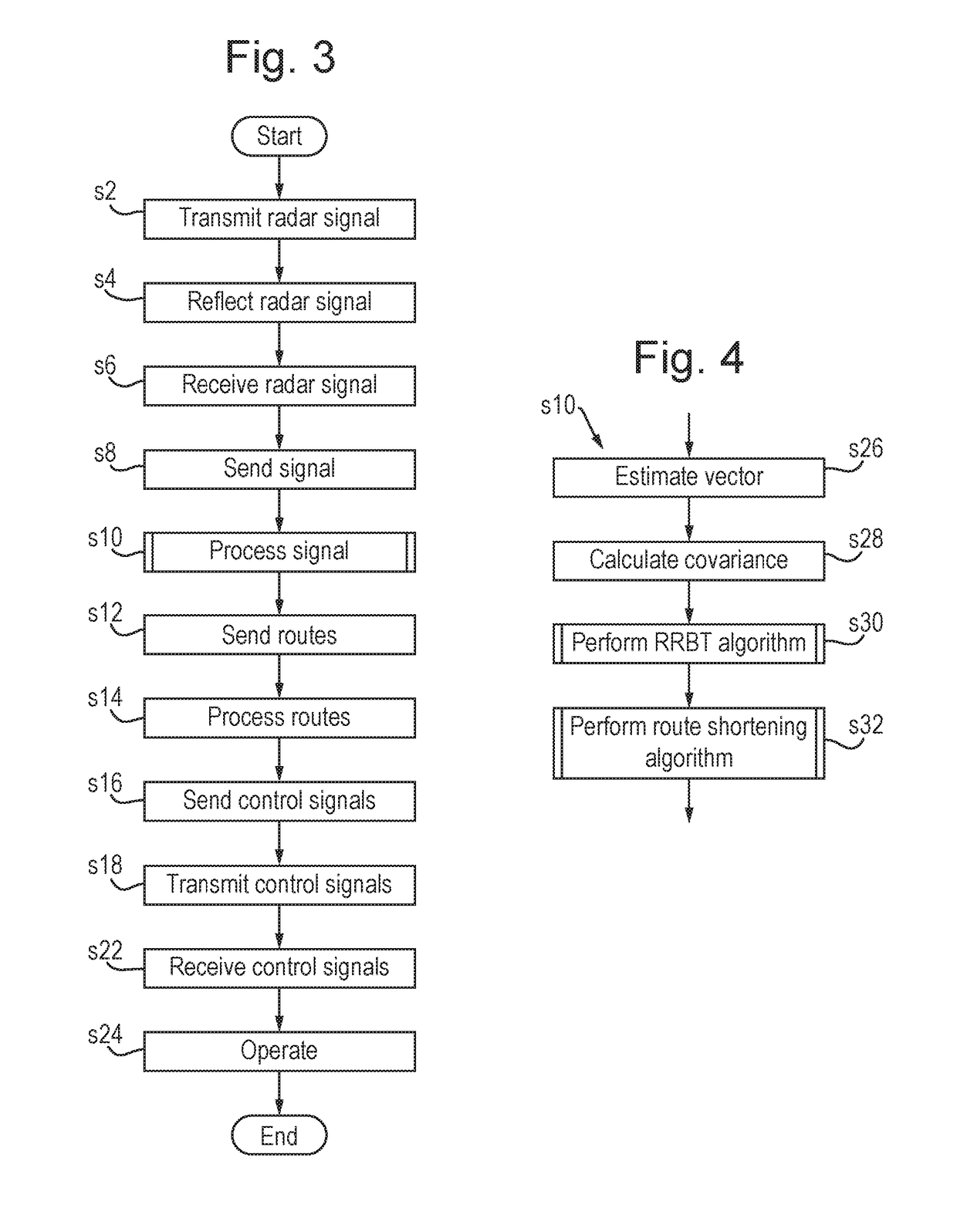Route planning
a technology for determining routes and routes, applied in the direction of process and machine control, navigation instruments, instruments, etc., can solve the problems of repetitive or time-consuming tasks, algorithms for determining paths or routes for vehicles tend to not be capable of determining routes, etc., and achieve the effect of reducing the likelihood of a failure of determined routes
- Summary
- Abstract
- Description
- Claims
- Application Information
AI Technical Summary
Benefits of technology
Problems solved by technology
Method used
Image
Examples
Embodiment Construction
[0036]FIG. 1 is a schematic illustration (not to scale) of a scenario 1 in which an embodiment of a method of controlling a group of vehicles is to be implemented.
[0037]The scenario 1 comprises a ground station 2, a first vehicle 4, and a second vehicle 6.
[0038]In the scenario 1, the ground station 2 is located on land 8 that is adjacent to a body of water 10 (e.g. a sea). The ground station is described in more detail later below with reference to FIG. 2.
[0039]In the scenario 1, the first vehicle 4 is a water-based vehicle. In particular, the first vehicle 4 is an unmanned autonomous ship which is controllable by the ground station 2 as described in more detail later below with reference to FIGS. 3 to 10. The first vehicle 4 is located at the surface of the body of water 10 at a position that is remote from the land 8.
[0040]In the scenario 1, the second vehicle 6 is a water-based vehicle. In particular, the second vehicle 6 is an unmanned autonomous boat. In this scenario 1, the se...
PUM
 Login to View More
Login to View More Abstract
Description
Claims
Application Information
 Login to View More
Login to View More - R&D
- Intellectual Property
- Life Sciences
- Materials
- Tech Scout
- Unparalleled Data Quality
- Higher Quality Content
- 60% Fewer Hallucinations
Browse by: Latest US Patents, China's latest patents, Technical Efficacy Thesaurus, Application Domain, Technology Topic, Popular Technical Reports.
© 2025 PatSnap. All rights reserved.Legal|Privacy policy|Modern Slavery Act Transparency Statement|Sitemap|About US| Contact US: help@patsnap.com



